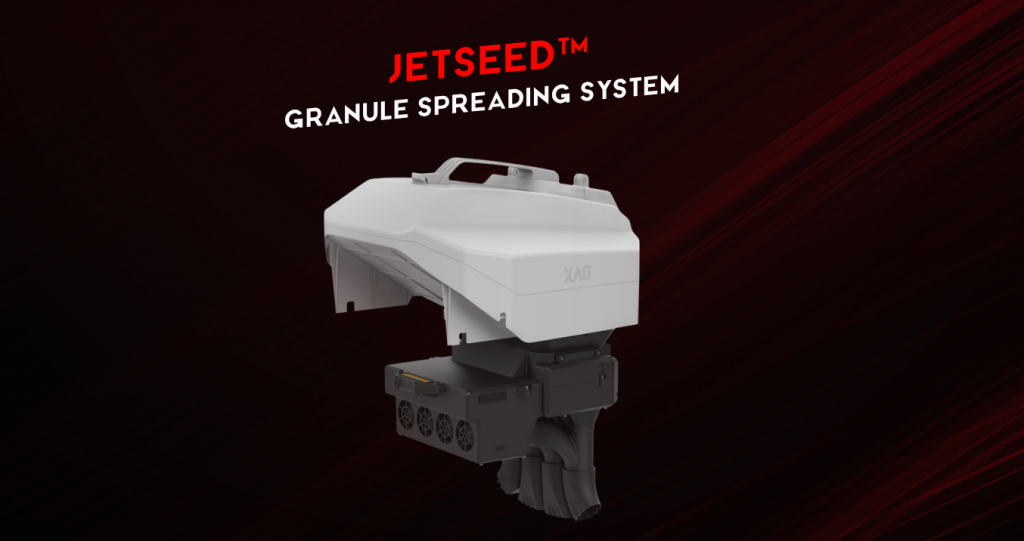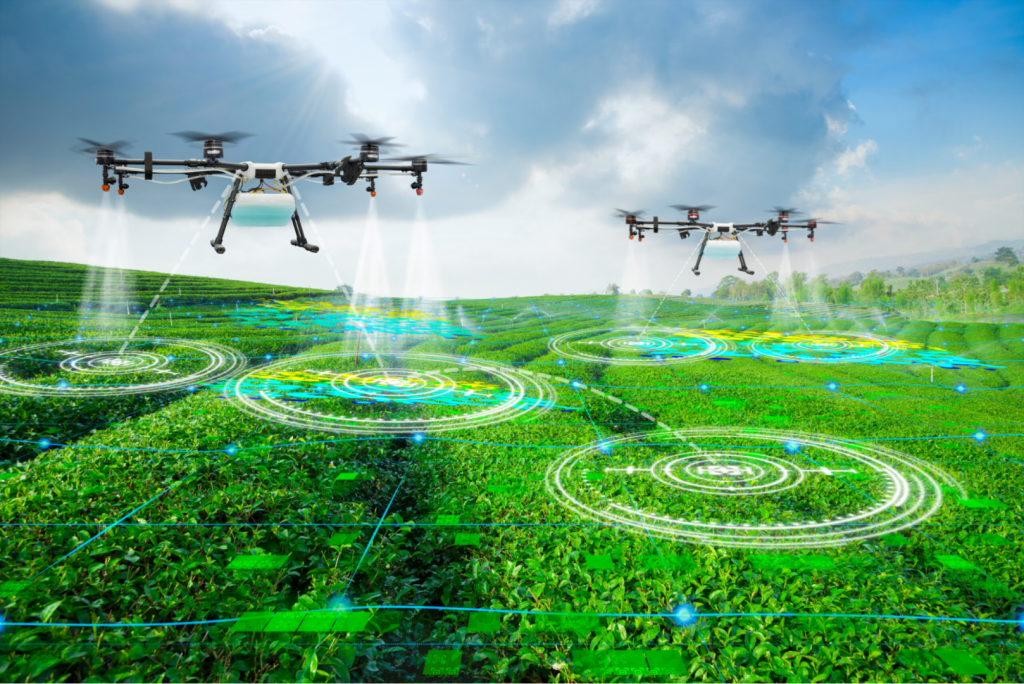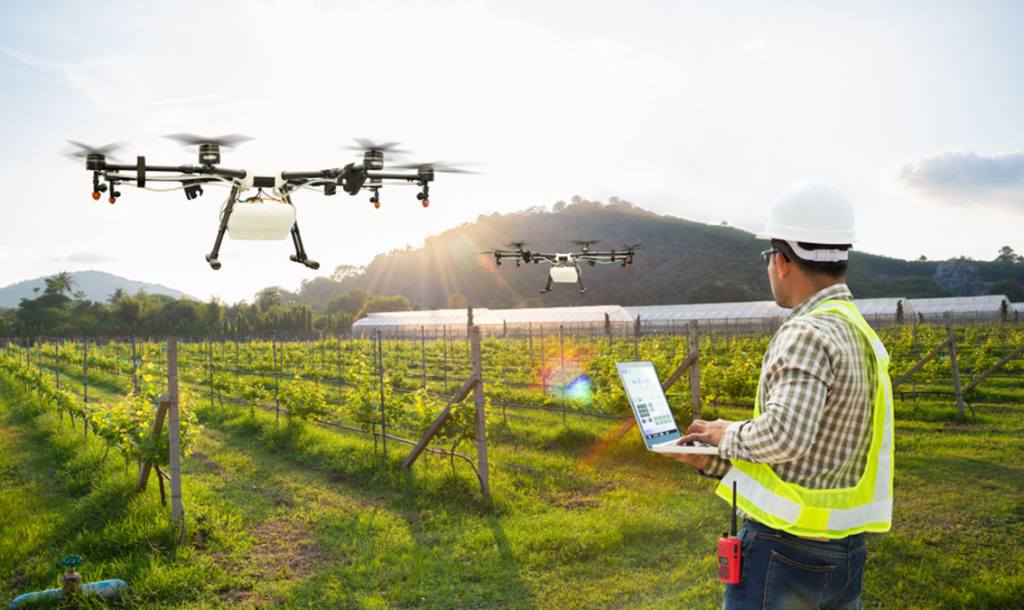Understanding the Scope of UAVs & Drones for Precision Agriculture in 2024
According to the most recent US Geological Survey report, irrigation accounted for 42% of the nation’s total freshwater withdrawals in 2015. As a result, governments are enforcing regulations to limit the industry’s resource consumption. Montana state, for instance, mandates that anyone using groundwater to cover 10 acre-feet per year must apply for a permit.
Similarly, the EPA has set maximum legally permissible pesticide tolerances in food, exceeding which can trigger government enforcement action.
Using drones in mechanized agriculture helps improve farming productivity and get better yields while minimizing water and pesticide requirements. Reports suggest that drones can lead to about a 20% increase in food productivity, 70% less pesticide use, 97% water saving, and 30x the efficiency in farming.
This report details the prominent applications of drones & UAVs in agriculture and their challenges when used for seed planting and spraying crop protectants. It also discusses various solutions to these challenges developed by research institutes and universities.
We’re compiling a comprehensive report on these trends. Fill out the form below, and you’ll be among the first to get a PDF of those insights directly in your inbox.
Sowing or planting through UAVs

Implementing UAV-based sowing or planting faces challenges, including efficient UAV paths, inefficient data collection, weather impacts on aerial paths, and optimizing loading capacity with seeding material considerations. Addressing these collectively is crucial for unlocking the full potential of UAVs and drones in precision agriculture.
Inefficient data planning and execution
Poorly planned UAV missions may result in incomplete or inaccurate data regarding soil conditions, crop health, and field characteristics. This incomplete information can lead to suboptimal sowing decisions, affecting seed placement, spacing, and timing.
This challenge is addressed by an innovative agricultural planting system developed by Zhejiang Nianifa Agricultural Development. This system uses drones to collect data about the farm and help users develop a planting plan. It then uses artificial intelligence and drones to sow crops and precisely calculate watering needs. This system makes better planting decisions, improving efficiency and crop yield.
Adverse effect of weather conditions on UAV Paths
Adverse weather conditions, particularly strong winds, pose a significant challenge to UAV operations, impacting the accuracy of seed dispersal. Simultaneously, achieving precise and uniform seed distribution necessitates the development of efficient UAV paths.
Zhejiang Jizhi New Energy Vehicle Technology addressed these challenges with a precision agricultural seeding UAV designed to prevent sowing deviation.
The UAV takes off against the wind, carrying a box full of seeds with a distribution mechanism. This system uses airflow to distribute the seeds efficiently on the soil below. It has additional features to optimize sowing and prevent blockages during seed disposal.
Low loading capacity of drones
The challenge of low loading capacity can significantly impact the efficiency and effectiveness of sowing practices in agriculture. This limitation can lead to increased time requirements for sowing, potentially delaying planting schedules and affecting crop yields for larger fields.

UAV by XAG introduces two cutting-edge agricultural solutions, the P100 Pro and JetSeed™, revolutionizing farming practices.
The P100 Pro can carry 50 kg of seeds and spread them quickly and evenly, even against the wind. It can distribute 10,000 kg of seeds per day. The JetSeed™ from XAG is a drone that can spread seeds over 12 acres per hour. It can be operated from a smartphone and works in various environments. Both these products show XAG’s dedication to improving farming with technology.
Similarly, with innovative aerial seeding technology, Dendra Systems takes agriculture and ecosystem revival to the skies. Using custom-built UAVs, Dendra accurately scatters native seeds across various terrains, such as steep slopes to remote islands. Each UAV can sow over 60 hectares daily, carry 700 kg of daily payload, and record the planting location for each bag of seeds to support ongoing monitoring.
Non-Uniform seed distribution
Conventional sowing methods are highly inefficient. Research indicates that a tractor with a 195 kg/ha sowing rate would consume 185 liters of diesel to travel just 63 kilometers. In contrast, agriculture drones can disperse 50 kg of seed within seconds, covering a field of 60 acres in a single day without causing fuel or CO2 burden. Moreover, they can provide a plantation plan, a feature lacking current planting methods.

Zhejiang Dongtian Technology’s UAV has a spiral pay-off sowing mechanism designed to optimize aerial seeding in agriculture. This system allows for a steady and controlled release of seeds, ensuring they are spread evenly over the field. This innovation aims to enhance the efficiency of agricultural operations, reduce manual labor, and potentially improve overall crop yield through more uniform seed placement.
Similarly, the adjustable pellet seeding UAV designed by Suzhou University created a special UAV for better and more flexible farm planting. This setup has mechanisms for spreading materials and planting seeds accurately. The UAV system can handle different seed sizes, showing progress in precision farming technology.
Recommended Report: Detecting Pests in Agriculture Using Artificial Intelligence
UAVs for Spraying Pesticides

Unmanned Aerial Vehicles (UAVs) for spraying pesticides in agriculture provide precise and targeted applications, reducing chemical exposure for farmers and improving overall efficiency. These UAVs enable farmers to cover large areas quickly, access difficult terrain, and apply pesticides with minimal environmental impact.
However, UAVs used for pesticide spraying face significant challenges, including limited payload capacity and liquid stability, resulting in inefficient pesticide dispersion.
Low payload capacity and liquid stability in storage
The deployment of UAVs for pesticide spraying encounters challenges linked to limited payload capacity and liquid stability during storage. Small UAVs often face restrictions on the amount of pesticides they can carry, leading to increased operational time and efficiency concerns.
Pesticides can degrade over time due to environmental factors like heat and sunlight, risking reduced efficacy during spraying operations. Moreover, the potential for leakage from storage containers poses environmental and safety hazards.
The UAV developed by Nanjing Yiyi Technology was designed to eliminate pesticides or liquid shake during plant protection operations. The drone has a special system for applying pesticides involving a medicine chest, a balloon, pipes, and a fan-like part called an impeller.
This process doesn’t need extra power, which saves energy and lets the drone operate efficiently for longer.
Overuse of pesticides
The excessive use of pesticides by UAVs in spraying can harm the environment and farming systems. Overapplication of pesticides from UAVs may result in environmental pollution, soil degradation, and harm to non-target species, including beneficial organisms like pollinators. This can pose health concerns for humans and animals and increase production costs.
The UAV developed by Nanjing Sanhuang Computer System seamlessly integrates with a management platform capable of data collection, plant analysis, flight planning, and plant monitoring.
The system can tweak spray settings using the data gathered on plant growth, environmental conditions, and crop health. The drone’s path is planned based on the crop protection route, and real-time checks are performed to see if spraying is right, too little, or too much.
Inefficient spraying control
Inefficient spraying control in agriculture, particularly when using Unmanned Aerial Vehicles (UAVs) for pesticide application, can result in various challenges. Poor control may lead to uneven distribution of pesticides, leaving certain areas undertreated or overexposed.
Huidaagtech has developed the plant protection UAV spraying operation control system to address these issues. It’s an innovative technology designed to enhance the efficiency of agricultural spraying operations.
It uses data collected from previous sprays to set the best settings, taking the quality and dose of the initial medicine into account. The system predicts and controls spraying by looking at different spray zones. It comes with a pilot control unit to maneuver it if needed.
Conclusion

Conventional techniques lack the ability to apply pesticides or fertilizers with precision, resulting in resource wastage and soil pollution. Drones or UAVs for agriculture offer ideal solutions to these issues.
They not only have the capacity to cover at least 10 acres in 20 minutes but can also precisely target crops that require varying amounts of pesticides or fertilizers, thus saving resources and time. As detailed earlier, they’re also extremely power efficient.
Major players in the agriculture sector, like Bayer, have already embraced these methods, suggesting that the widespread adoption of drones in agriculture is not far off.
Contact the experts today to gain insights into Agri Tech innovation landscape and stay ahead in the competition

Authored By – Suborna Chatterjee, Intelligence Team
Edited by – Hemanth Shenoy, Marketing




